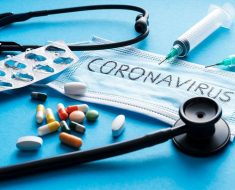
- Researchers developed an experimental treatment that can repair and regenerate heart muscle cells following a heart attack.
- After a month of treatment, mouse models of a heart attack regained close to usual cardiac function.
- The researchers aim to test the technology on other animal models before entering clinical trials.
Heart failure happens when the heart cannot pump sufficient blood and oxygen throughout the body. In 2018, 379,800 death certificates, or around 13.4% of deaths, in the United States referenced the condition.
Most cases of heart failure occur due to a loss of cardiomyocytes- heart muscle cells- which results from aging and conditions including heart attack, high blood pressure, and coronary artery disease. Damage from these conditions can irreparably damage the heart.
While heart transplants are the standard treatment option for heart failure, the limited availability of donor hearts and the risk of rejection restrict widespread use.
Meanwhile, efforts to produce lab-grown cardiomyocytes from pluripotent stem cells have also failed to produce long-term results.
Finding ways to repair cardiomyocytes could improve the prognosis for those at risk of heart failure and other cardiovascular conditions.
Recently, researchers developed a new technology that repairs and regenerates cardiomyocytes in mice following a heart attack.
“Shortly after birth, the human heart stops growing by cell replication, and the heart increases in size by increasing the size of each individual cell,” said Robert Schwartz, Distinguished Professor at the Department of Biology and Biochemistry at the University of Houston in Texas, and one of the study’s authors. “Thereafter, very few new heart muscle cells are produced over a person’s lifetime.”
“When there is an injury such as a heart attack, the muscle cells are deprived of oxygen, and many of them die. Since no new cells can be generated, the pumping of the heart can be severely depressed and eventually cause death,” Dr. Schwartz told Medical News Today.
“What Animatus Biosciences has done is to develop a pair of synthetic modified messenger RNAs (mRNA) that code for proteins that can restart the process of cell replication and consequently replace the dead heart cells with new, healthy tissue to restore the function of the heart,” he explained.
The study was published in the Journal of Cardiovascular Aging.
Stemin and YAP-5SA
A transcription factor protein known as serum response factor (SRF) is essential for creating new heart cells. How it interacts with other cofactors gives rise to cardiac-specific gene activity.
A modified version of transcription factor YAP1, also present in the heart, known as YAP-5SA, also affects cardiomyocyte proliferation and growth.
In the present study, the researchers hypothesized that disrupting interactions between SRF and cofactors could lead to the dedifferentiation of cardiomyocytes. They wrote that this could complement YAP-5SA and put cells in a stem cell-like state from which they could become new cardiomyocytes.
To test their hypothesis, they administered a mutated version of SRF known as ‘Stemin’ alongside YAP-5SA to a rat cardiomyocyte cell line using modified mRNA (mmRNA) technology.
In doing so, they induced cardiomyocyte dedifferentiation among the cells and replicated adult cardiomyocytes.
The researchers then administered the experimental treatment to a mouse heart attack model in a separate study. Within a day of injection into the left ventricles of infarcted adult mice, they reported an over 17-fold increase in cardiomyocyte nuclei.
They further noted that the mice’s mouse hearts were repaired to almost usual cardiac pumping within a month and had little scarring.
The researchers concluded that the combination of mmRNA encoding Stemin and YAP-5SA is a promising treatment for human heart disease.
When asked about the study’s limitations, Dinakar Iyer of the Department of Biology and Biochemistry at the University of Houston, one of the study’s authors, told MNT: “The major limitation is that our study findings are limited to only mice. We are planning to repeat the same experiments in pigs and see if we could get a similar response. If the outcome is similar in pigs, our next approach will be to do a limited study (with FDA approval) in heart patients.”
Dr. Schwartz added, “It is possible that the mRNA combination may not work in human patients, but because the genetic pathways that are activated by our mRNA combination are very similar in all mammals, we are confident that they will work in humans as well.”
Future Treatment
When asked about what this new technology could mean for future treatment options for cardiovascular conditions, Bradley McConnell, Ph.D., FAHA, FCVS, Professor of Pharmacology at the University of Houston, an author of the study, told MNT:
“This novel heart repair technology could help reduce the need for left ventricular assist devices (LVADs) – a mechanical device serving as a bridge-to-transplant therapy or even as a destination therapy to repair the human heart following a heart attack.”
“Instead, the injection of synthetic mRNAs expressing Stemin and YAP-5SA into the damaged heart could replace this battery-operated LVAD pump,” he continued.
Dr. Iyer added: “Our study supported by Animatus Biosciences is unique in the sense that we are using the technology of mRNA (Messenger RNA), as in the current highly successful mRNA COVID vaccine preparations.”
“In a hospital setting, the mRNA of Stemin and YAP-5SA could be directly injected into the infarcted heart of a patient. The mRNA carries the instructions to make the two specific proteins, and once its job is done, i.e., the infarcted heart is repaired, the mRNA is broken down by the body,” he concluded.
Source: Read Full Article





